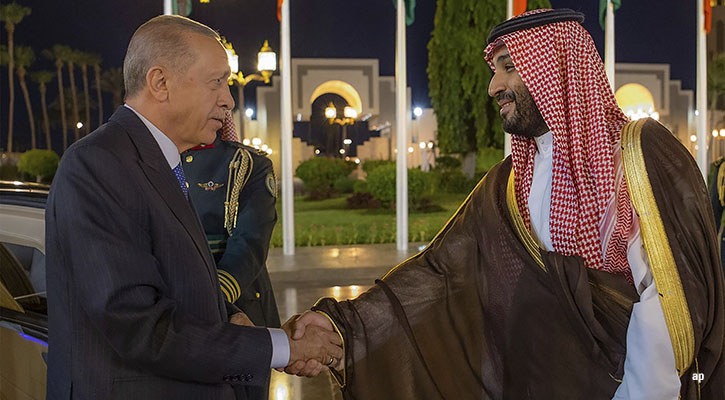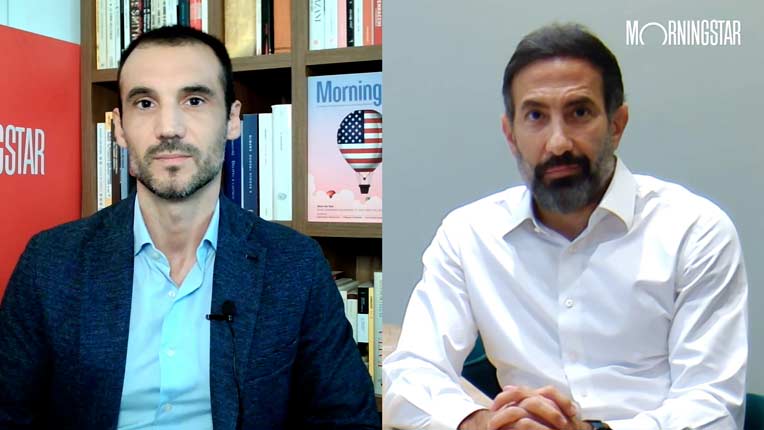
The BRICS are expanding, but equity funds that invest in its constituent emerging countries are disappearing. And it’s not just the war in Ukraine that has wiped out positions in the Russian market. The decline has its seeds in a process that began more than a decade ago.
The acronym BRIC was coined in 2001 by Goldman Sachs economist (and former Treasury minister) Jim O'Neill, who argued that, by 2050, Brazil, Russia, India and China would dominate the global economy. In 2010, South Africa was added to the list and the acronym became BRICS.
During the recent BRICS summit in South Africa between August 22 and 24 2023, it was announced six more nations would join from January 2024. They are Argentina, Egypt, Ethiopia, Iran, Saudi Arabia and the United Arab Emirates. "BRICSAUSEEI", anyone?
Abrdn emerging markets analyst Michael Langham sees the geopolitical implications of the group’s enlargement.
"The enlargement of membership was expected and this is likely to reinforce the importance of the alliance for geopolitical discussions, particularly in the Middle East, where most of the new members come from and where China has sought to increase its influence," he says.
"The group is also likely to use enlargement as a tool to influence international political debate and the development of international institutions outside the G7, G20 and the United Nations."
Few BRIC Funds Have Survived
Investors are not going in the same direction, however. After a few years in the sun, BRIC equity funds have begun to suffer outflows. Many have been closed or merged into emerging strategies.
Not even Goldman Sachs’ BRIC fund escaped this fate, and found itself incorporated into the company’s Emerging Markets Equity portfolio on November 16 2020. Justifying the move, Goldman blamed “the evolution of the market from thematic (acronym-based) investing to broader exposure to emerging markets.”
Digging through the Morningstar Direct database for funds domiciled in Europe, we find about 40 BRIC equity strategies, including those that no longer exist. If we narrow the search to the survivors, just 11 remain available to European investors.
There have never been that many BRICS ETFs (there are six domiciled in Europe according to Morningstar data) but even of this small group only one has actually survived. iShares BIC 50 UCITS ETF has now changed its name to "BIC" to exclude Russia, and replicates an index that measures the performance of the 50 largest companies in Brazil, India and China.
The funds that continue to use the "BRIC" acronym in their titles have likewise ended their Russia exposure since February 2022.
The BRIC Exodus
But BRIC strategies' decline began years earlier. Morningstar data shows net outflows for each calendar year since 2011 for European funds and ETFs of this type, totaling €9.31 billion (£8 billion). Their assets fell from €7.63 billion at the end of 2011 to €1.31 billion as of December 2022.
The beginning of 2023 was no different from previous years. Redemptions continued to the tune of €78.57 million in the first seven months and assets fell further to €1.22 billion.
Disparate and Disappointing
As the years have worn on, the BRICS concept has hardly lived up to expectations. The initial idea – of bringing together the countries with the highest economic growth potential – has run up against the disappointing performance of Brazil and Russia. More recently, China entered deflation and is facing a real estate crisis that fund managers way beyond the country feel obliged to keep an eye on.
As Raiffeisen Capital Management's emerging markets investment team explains in a note: "since 2001 the only major BRICS action has been the creation of a new development bank and a $100 billion (£79.5 billion) reserve fund in 2014.
"After that there was almost no talk about them, until recently when the West's sanctions against Russia and the intensifying confrontation between the West on the one hand and Russia and China on the other led to an acceleration of the debate on the formation of the BRICS as a geopolitical and economic bloc," it said.
Is The Dollar Hegemony at Risk?
What’s more the South Africa summit revealed a certain unevenness.
"Although there are clear common goals among the members to increase their geopolitical power, to reshape and challenge existing global institutions and practices, and to reduce the use of the dollar, it would be a mistake to view their individual geopolitical goals as homogeneous," Langham says.
"Indeed, Brazil, India and South Africa have all rejected the idea that the group is seen as directly challenging the West. In India's case, there is concern that the group is a vehicle for China to expand its influence. Enlargement of membership will add additional complexities and likely limit the potential for any major reform plans to emanate from the group.
"Fears that the group will challenge dollar hegemony seem exaggerated for now, given the members' competing geopolitical objectives and unwillingness to cede control over exchange rates and/or monetary policy."
Raiffeisen is on the same page.
"Economic and partly political conflicts of interest and the high degree of heterogeneity among the current five members of the BRICS are likely to remain a significant obstacle to the creation of a common currency," it says.
"This is even more so since Russia is the driving political force and China the dominant economic power within the group. Whether the project will actually lead to the creation of an alternative and more equitable world economic order at the moment is entirely uncertain. There is also the possibility of complete failure or a shift to less ambitious goals."
BRIC Funds: Performance
Over the last decade, BRIC fund investors have gained average returns of 5.3% annualised over the period, a percentage that turns negative (-3.76% annualised) over the three-year period to 28 August 2023, Morningstar data shows.
These figures compare with the average performance of emerging market equities, which was 4.75 percent annualised over the last decade and 0.73% percent annualised over the three-year period to 28 August.




























